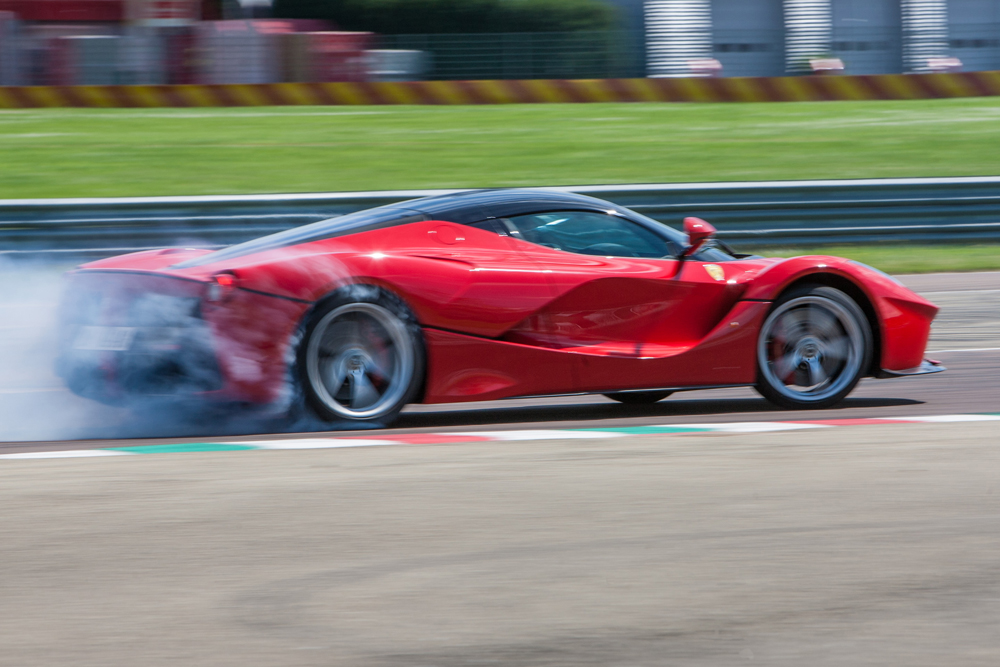James May's first drive review: Ferrari LaFerrari (2014)
Ferrari is playing up the F1 technology behind its first hybrid supercar but what wins your heart is its sheer beauty and superb handling, writes James May
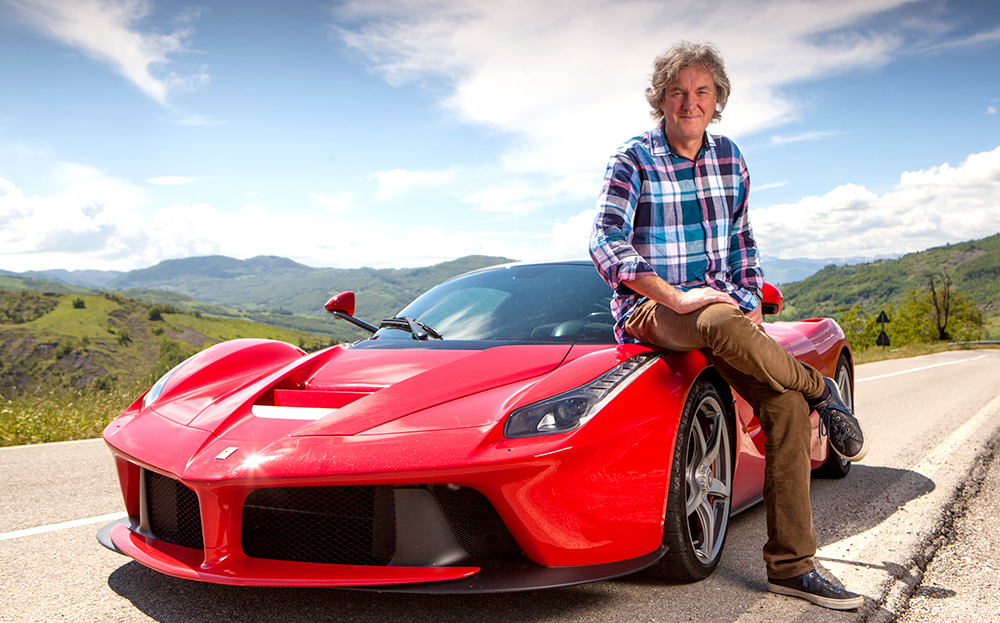
ONCE, ON a much earlier trip to visit Ferrari in Maranello, I stayed at Il Grande Albergo Bruno, which I thought sounded quite exotic. Until I realised it simply meant “the big brown hotel”, which rather spoilt everything.
I suspect Ferrari will have a similar problem with its new hybrid supercar, the LaFerrari. It seems almost romantic, but translated into English it sounds more like a car that might have belonged to a forgotten 1980s beat combo: the TheFerrari.
Still, silly name but a fabulous car, the diametric opposite of a Jensen Interceptor. It’s stunning — just standing alongside it, merely contemplating its existence, triggers a carnal disturbance.
One of the things I love about Ferrari’s styling is that it’s never become hung up on design heritage or any timorous nonsense like that. A new model always looks resolutely modern, and that, I’m sure, explains why old ones are often more coveted than other cars. A Ferrari is of its time, although sadly this does mean we have to live with the 1984 Testarossa.
A new Ferrari always looks resolutely modern, and that, I’m sure, explains why old ones are often more coveted than other cars. A Ferrari is of its time, although sadly this does mean we have to live with the 1984 Testarossa.
But a Ferrari must also dwell at the fuzzy edge of what can be achieved with the performance and roadholding of a car; otherwise it has no dignity. Without this a Ferrari would be nothing more than a stylistic sham, just as a Range Rover would be if it were useless off road.
I love supercars, even though I know they’re a bit ridiculous, that they confer no particular qualities on their owners and that no distressed woman has yet run into a room and cried in desperation, “Can anyone here drive a supercar?”
I love Ferraris the most. I own one, in fact, and I love it mainly because ’tis a thing of beauty that gives me a small tingly sensation whenever I look at it.
Browse the used Ferraris for sale on driving.co.uk
So the LaFerrari is gorgeous, and that’s the way it should be. Its interplay of curves and corners makes the lozenge-based theme of Lamborghini’s (admittedly knockout) Aventador seem a bit trite. Inside, LaFerrari — can we dispense with the “the”? Good — treads a perfect line between stripped-out weight consciousness and good taste. It’s obviously pared back in line with its serious performance remit, but it’s not a dreary temple to composites and Alcantara. It’s nicely upholstered.
There’s also a lot of regular new-age supercar stuff to consider with LaFerrari. It’s made from carbon fibre, of course, four varieties of the stuff, blended together, popped in an autoclave and baked at 150C for three hours or so until uniformly stiff and horribly expensive.
There are active aerodynamics all over it: splitters, a front wing and a movable rear one that doesn’t merely go up and down — as the Porsche 911’s does — but veritably dances around by degrees depending on what’s going on. It even knows when you’re about to enter a corner, apparently.
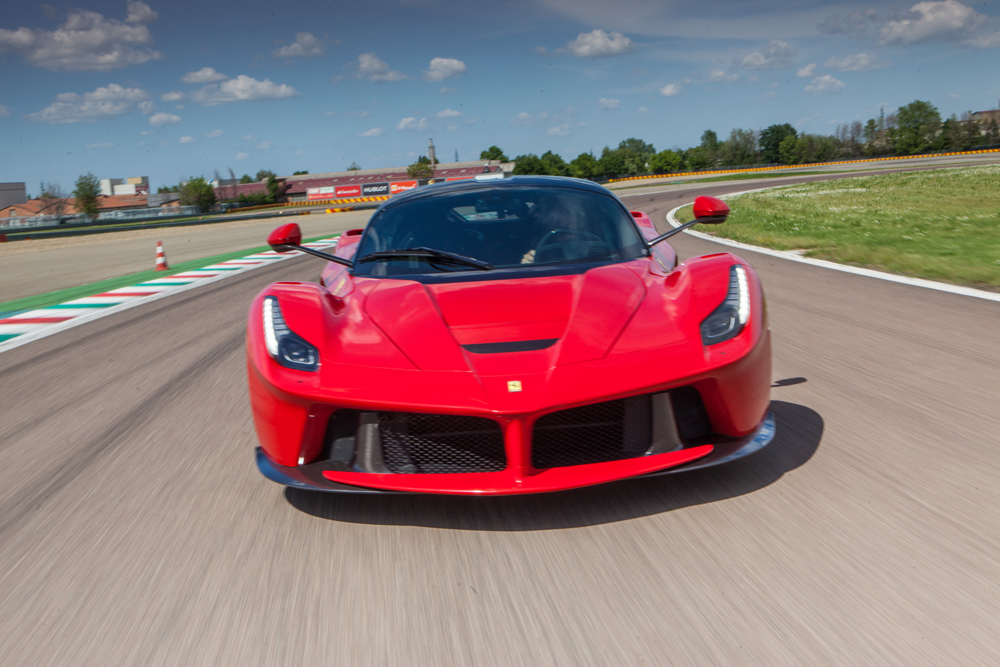
It has the same wheelbase as a 458 Italia and same overall length as an Enzo, but it is 40mm narrower than the latter and its centre of gravity is 35mm lower. This alone, says Ferrari, is worth 2.2 seconds a lap at the Nürburgring. It also explains why the driver’s seat is fixed, and that it’s the pedals and wheel that move to counter the impression that someone else has borrowed your car.
Fixing the seat reduces the overall length — by the amount a conventional seat is required to move fore and aft — and doing away with the seat mechanism puts the driver, and hence the roof, and therefore the centre of gravity, lower still.
And that’s all wonderful, but it is stock supercar fare. What’s really interesting here is that LaFerrari is a hybrid, the company’s first, and this needs some qualification. A hybrid, we all know, is a car with an internal combustion engine and an electric motor. It might be a “series hybrid”, such as the Fisker Karma, in which the engine works simply as a generator of electricity. It could be a “parallel hybrid”, such as the ubiquitous Toyota Prius, in which either the petrol engine or the electric motor or both can drive the wheels.
Or it could be LaFerrari, which is really a road-going interpretation of Formula One Kers (kinetic energy recovery system) technology; the electric motor is there as a sort of power supplement — a bit like those capsules for men advertised on the backs of buses.
It’s important to understand that LaFerrari cannot be driven on electric power alone because, as Ferrari bluntly puts it: “We are not interested in electric cars.” LaFerrari is a petrol-powered supercar like any other Ferrari, and works only because you fill it up with super-unleaded.
Rather, the electric motor and battery pack are there as a means of harnessing and reusing energy that in earlier and less enlightened times we would have thrown away to the cosmos in the form of wasted heat — mainly from the brakes . Braking wastes fuel because you’re getting rid of energy that was obtained from the fuel. Kers saves it instead in the form of generated electricity and presents it ready for use when you want it — when it’s time to accelerate.
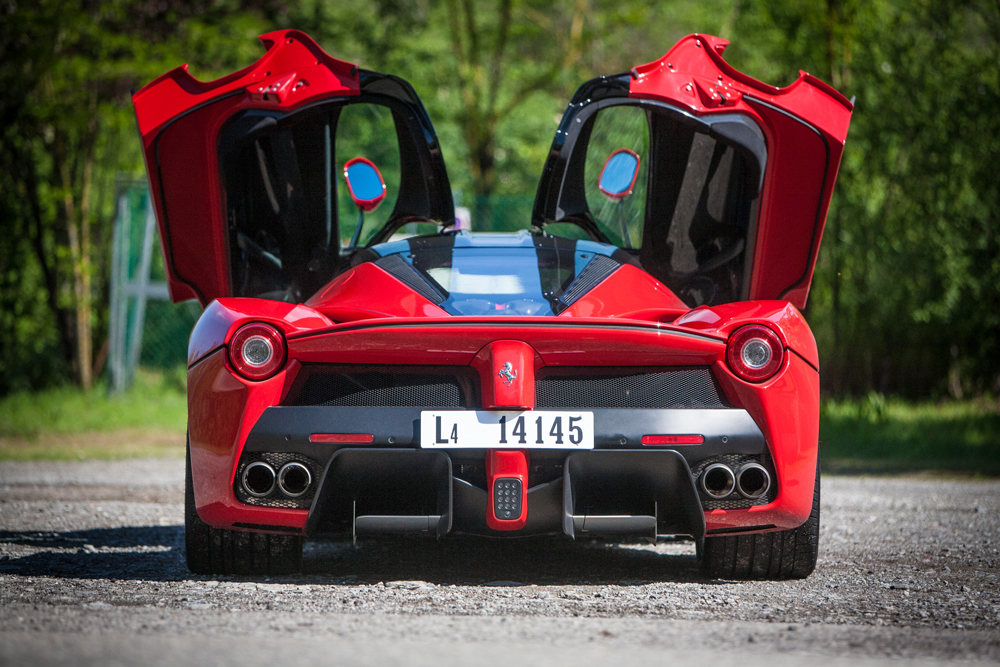
This is not a car with a 789bhp V12 petrol engine and a 161bhp electric motor. It’s a 950bhp car, and the electric motor is simply an element of the powertrain, in the way the alternator or the oil pump is. That motor is always doing something — driving, generating charge — and should be thought of as part of the transmission since it helps with the job of converting furious combustion into motion.
Here, perhaps, is an easier way of thinking about it. The appeal of the internal combustion engine actually lies in its shortcomings, in the peaks and troughs in its delivery, which we must learn to exploit, and in that it needs a gearbox to be useful to us.
A high-revving and peaky supercar engine is the most exciting because it is in some ways the most flawed — it must be stretched and worked hard to give of its best. A plodding diesel with its uniform torque curve makes more sense, but doesn’t really translate into a buzz in your abdomen.
The technical presentation included a lot of graphs and charts. I timed the event, and it came out only about 15 minutes shorter than Giuseppe Tornatore’s Cinema Paradiso.
LaFerrari’s hybrid system gives you low-down torque — that is, sheer grunt — when you need it most: powering out of a bend, rolling on in a high gear. It offers a diesel-like quality but only when you require it. The rest of the time it sparkles like the windows in Gaudi’s Sagrada Familia. How brilliant is that?
Obviously I’m simplifying this. You should be grateful, as the technical presentation through which all this was explained included a lot of graphs and charts. I timed the event, and it came out only about 15 minutes shorter than Giuseppe Tornatore’s Cinema Paradiso. Kers is a fairly simple idea in physics but a fiendishly complex proposition in real-world automotive engineering.
Thankfully, if you are lucky enough to buy LaFerrari, you can forget all this. The car is, as Ferrari’s seemingly 15-year-old test driver Raffaele de Simone put it as he climbed in next to me for a lesson on the Fiorano test track, “just a Ferrari”. The controls are perfectly familiar to anyone who has driven a 458 — most of them are the same, in fact — and you drive LaFerrari as you’d drive any other car.
It is simply a blindingly fast and beautifully balanced supercar, with sublime steering and an intoxicatingly granular engine that happens to out-perform its Enzo predecessor while cutting its CO2 levels by more than 200g/km. This is not a measure of Ferrari’s concern for the planet but of how much more efficiently petrol can now be consumed. It’s like being some sort of energy benefits cheat.
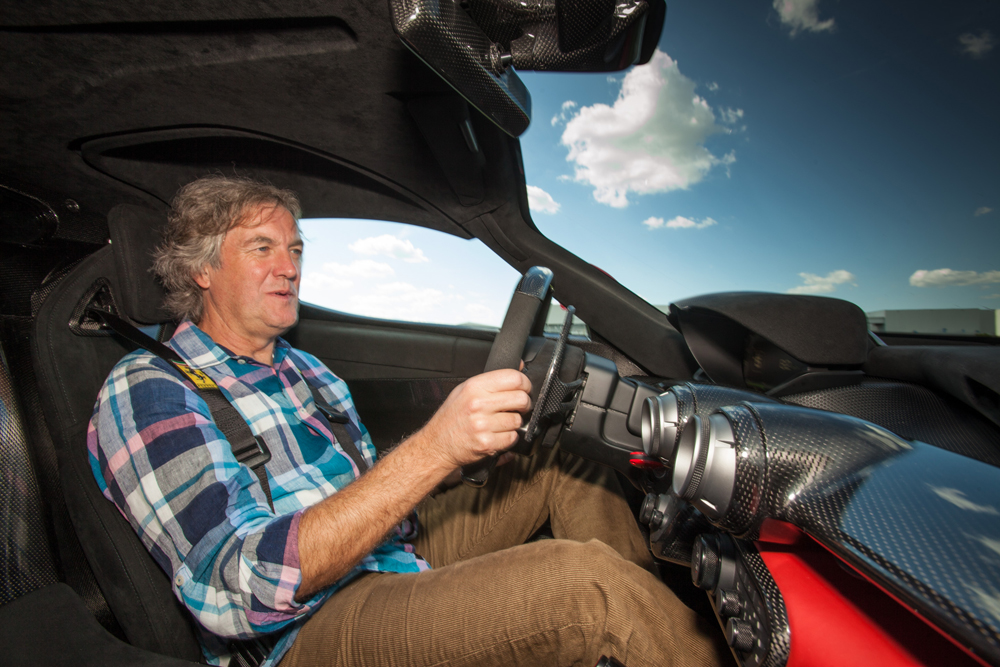
You can, if you want, dial up a segmented circular dashboard display that will show you as a series of flashing lights exactly how your energy is being managed. I don’t recommend it, though, because it’s like trying to drive through a prog-rock gig, and a bit distracting.
Feel it instead. As I drove up the tortuous roads in the hills above Modena, I would enter a sharp bend, boot the pedal to drive out of it and think, for a tiny fraction of a second: “Sod it — should’ve gone down another gear.”
But then in less time than it takes for one of Ferrari chairman Luca di Montezemolo’s eyeballs to twinkle I’d realise that I had it right after all. That’s the real-world effect of LaFerrari’s hybrid drive, a wonderful credit and debit system for dealing with power, and the harder you go, the better it works. The more you spend, the more you save — just as with one of those garden tool promotions at B&Q.
It was much the same on the Fiorano track, where the forgiving nature of the power delivery covered up for a few untimely changes and a bit of shoddy positioning. I thought my performance was absolutely balistico; Raffaele said my handling of the notorious “turn seven” was now “really quite good” but around 25mph slower than it should have been. I’m pretty sure it’s the quickest I’ve driven a car around a track, including the Bugatti Veyron Super Sport.
It is simply a blindingly fast and beautifully balanced supercar, with sublime steering and an intoxicatingly granular engine that happens to out-perform its Enzo predecessor while cutting its CO2 levels by more than 200g/km.
But quicker than the McLaren P1 or Porsche’s 918 Spyder? This is the hybrid supercar showdown that the world seems to be waiting for, and sooner or later it will have to happen. One of them will be the fastest round a circuit — the Top Gear track, perhaps — and thus probably the planet’s quickest road-going car.
It will be intriguing, but in a way I’m not really bothered. We will need the telescope of history to know whether hybrid drive is relevant in the long run, or if it’s just a buffer during a gradual shift to moving around using other sources of energy.
Anyway, I’ve already decided I want LaFerrari. Time will gradually diminish the significance of the dry figures that denote its performance, and only the artistry will remain. I want the Ferrari for the principal reason that anybody wants one. Because it is the loveliest.
James May’s LaFerrari verdict
★★
In a sentence: LaFuture of supercars
Ferrari LaFerrari specifications
Price: £1m (subject to exchange rate)
Engine: 6262cc, V12 petrol unito with elctric motor
Power (combined): 950bhp @ 9000rpm
Torque (combined): 663 lb ft @ 6750rpm (estimated)
Transmission: 7-speed dual clutch automatic
Acceleration: 0-62mph in 2.9sec
Top speed: 217mph+
Fuel: N/A
CO2: 333g/km (estimated)
Road tax band: M
Release date: All 499 examples sold
Browse the used Ferraris for sale on driving.co.uk


